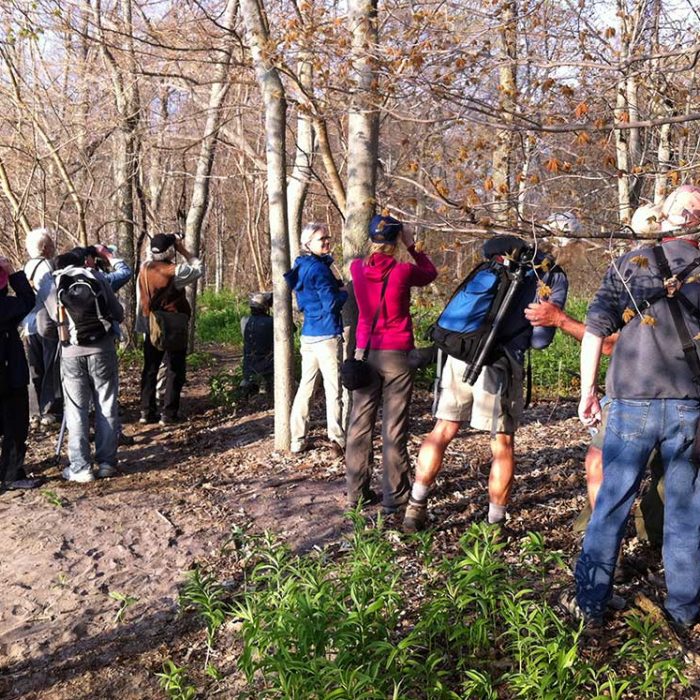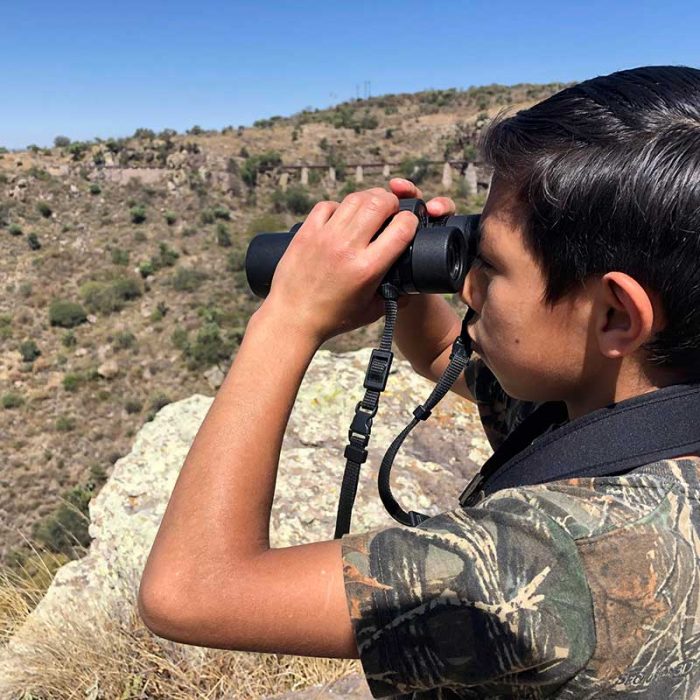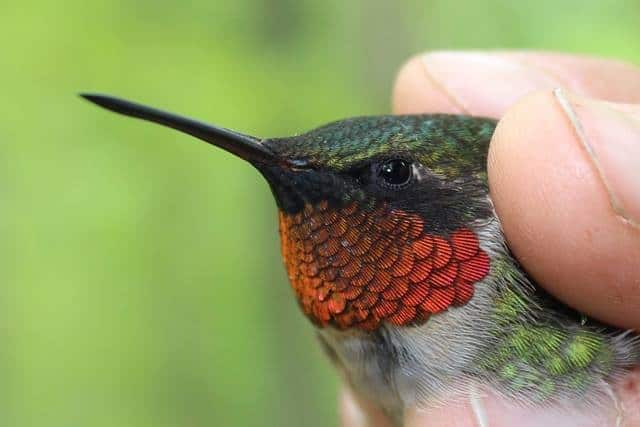Photo by Sumiko Onishi 2018
To judge by the weather at the beginning of October, southern Ontario was reluctant to accept the onset of fall. Temperatures were around 20 to 23 degrees Celsius, and even some north winds on the night of October 2nd weren’t enough to convince birds to migrate. Diversity remained high, with 54 species observed on October 1st, but activity in the netting area was slow. The lowest point was reached on October 4th when only a single bird – a Magnolia Warbler – was captured in four hours of banding. Almost the only sign of the lateness of the season lay in the increased number of Hermit Thrushes being banded; elsewhere late summer still lingered, especially in the Chimney Swifts and swallow species that were seen flying high above the canopy on October 3rd.
The temperature began to drop on the afternoon of October 4th as the winds shifted to the north. The morning of October 5th was distinctly chilly, with a temperature of 13 degrees Celsius – a drop of ten degrees from the morning before! This heralded good conditions for bird migration, and sure enough, PIBO’s field workers were greeted with chips and chirps as they made their way into the netting area in the pre-dawn. From the moment the mist-nets were open White-throated Sparrows and Hermit Thrushes positively threw themselves into them, and even though nets had to be closed an hour earlier than usual due to rain the station still banded 143 birds! Most were Hermit Thrushes, Swainson’s Thrushes, Golden-crowned Kinglets, Ruby-crowned Kinglets and White-throated Sparrows, all common fall migrants. Large numbers of Brown Creepers and Winter Wrens were around, and an increased number of Myrtle Warblers were present as well. This was also the first day where significant numbers of sparrows were observed: nine sparrow species in total, including the season’s first Savannah, Eastern White-crowned, and Song Sparrows, and Eastern Towhee and Dark-eyed Junco. And on the first net run of the morning, the very first Northern Saw-whet Owl of the fall was captured: an exciting moment, but also an upsetting one for the owl, who dropped its breakfast (a large deer mouse) and did not stay to pick it up again after being banded, no matter how appetizingly PIBO staff members arranged it on a nearby branch.
In view of the migration activity of the day before PIBO staff were eager to get to work the next morning, but the weather did not cooperate. October 6th was marred by bouts of torrential rain, interspersed with sunny skies that pushed the temperature back up to almost 20 degrees Celsius. The mist-nets were open for only a short time and it was difficult to see or hear birds through all the water dripping off the leaves. In the afternoon, once the skies had cleared, many Golden-crowned and Ruby-crowned Kinglets, Myrtle and Western Palm Warblers, White-throated and Eastern White-crowned Sparrows, Dark-eyed Juncos, Yellow-shafted Flickers and Eastern Phoebes were seen along the road that runs through the Stone Road Alvar.
After the wet weather had passed, the temperature continued to climb. Large flocks of migrating American Robins began to be seen, with a group of twenty observed on census October 10th. Winter Wrens remained common and were often seen darting across the net lanes as they called to one another irascibly. Every tree in the netting area seemed to have a Brown Creeper or a Red-breasted Nuthatches climbing it, and groups of White-throated Sparrows were frequently seen and captured. Raptor migration continued, with a Northern Harrier, Cooper’s Hawk, Peregrine Falcon and Merlins seen on October 10th, and a Red-tailed Hawk on October 13th. The wind rose and temperatures began to drop once again on October 11th, bringing in more typical fall migrants. The first Rusty Blackbird of the season was seen on census October 12th and the first Horned Grebe on October 13th. Overall though, waterfowl migration has yet to begin in earnest.
In light of the recent variability in weather and the unseasonably warm temperatures Pelee Island has experienced, people often want to know how this year’s fall migration compares to previous years’. Are the birds confused by the extreme weather conditions? What is their reaction to the higher than usual temperatures? The truth is… it’s complicated! There is always some variability from year to year, and considering all of the factors and conditions that influence birds and bird migration it’s extremely difficult to pinpoint the effects of weather specifically. Rather than looking at season-to-season and year-to-year differences, it’s more important to look at long-term population trends over many years, and even decades. The purpose of PIBO’s field work is to generate data for this type of long-term population monitoring, which is carried out by organizations like Bird Studies Canada.
However, with that being said – it is also true that PIBO has had some unusually late sightings of certain migrants this year! Yellow-bellied Flycatchers are a species that in most years is not seen later than the last week of September, but PIBO has banded two of them so far this October: one on October 8th, and another on October 10th. Indigo Buntings are more commonly recorded by PIBO in the beginning of the fall as hatch-year birds born on the island leave their nests and begin their journey south, and yet one was banded on October 13th. A single Red-eye Vireo was recorded on September 27th, and then after almost three weeks where they were neither seen nor heard, one was banded on October 14th. Groups of Tree Swallows were seen migrating south off Fish Point on October 9th and October 11th. Yellow-billed Cuckoos are early migrants, but one was seen on the afternoon of October 11th along South Shore Road. And a Ring-necked Duck, a species that is rarely recorded by PIBO in the fall (though it is often seen in the spring), was spotted in Fox Pond during the census on October 14th. As yet, each of these late sightings is only a single data point in the population monitoring of each of these species, and maybe they will remain as such. But as environmental conditions continue to change, they may represent the beginning of a trend – and in that case, PIBO and the other bird banding stations of the Canadian Migration Monitoring Network will be able to provide the quantitative data to prove it.
The Pelee Island Bird Observatory will be hosting its first public owling night of the fall this Saturday, October 20th, from 7 to 9 p.m. at the PIBO cottage on Pelee Island (585 South Shore Road). Join us for mulled wine, hot cider, and the chance to see a Northern Saw-whet Owl, Ontario’s smallest owl species!
(If it rains on Saturday, the event will be rescheduled to Sunday, October 21st. Please check PIBO’s Facebook page for updates!).







